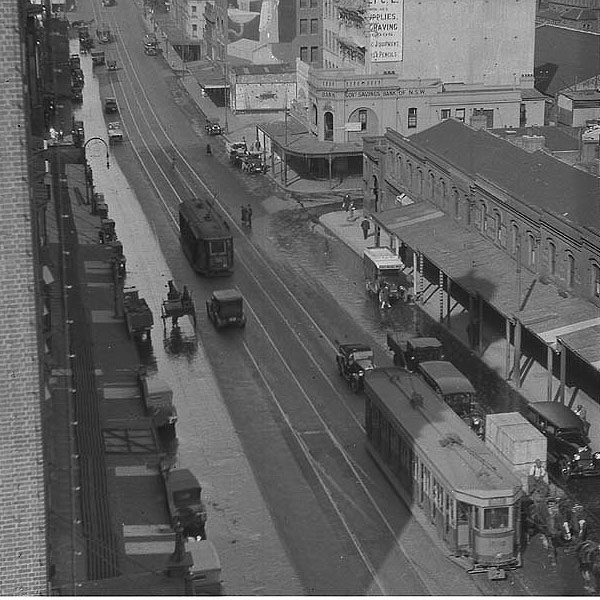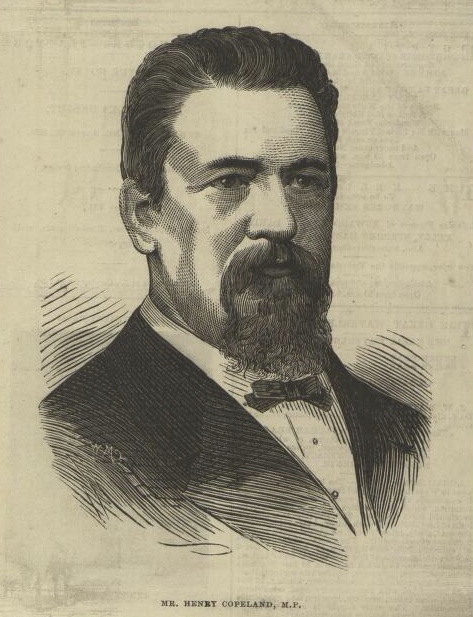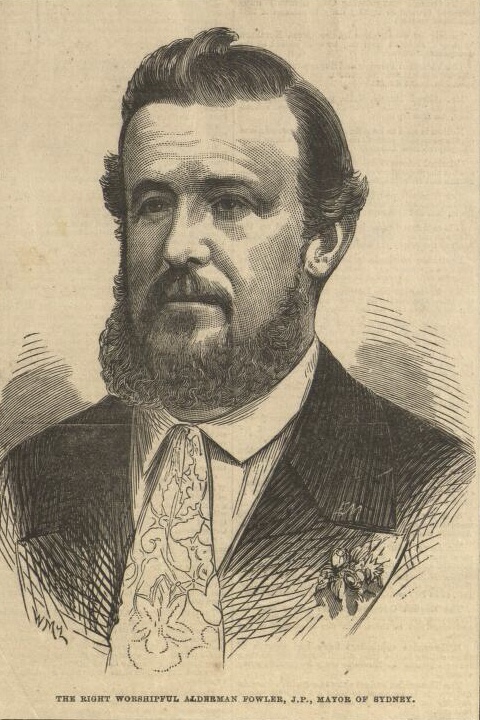|
Electoral District Of Sydney-Phillip
Sydney-Phillip was an electoral district of the Legislative Assembly in the Australian state of New South Wales. It was located in central Sydney and named after Arthur Phillip. It was created in 1894 from part of South Sydney. It was in the area surrounding central railway station area, bounded by Liverpool Street in the north, Elizabeth Street in the east, Cleveland Street in the south, while the western boundary consisted of Newtown Road, George Street West and George Street. In 1904 it was largely replaced by Phillip Philip, also Phillip, is a male given name, derived from the Greek (''Philippos'', lit. "horse-loving" or "fond of horses"), from a compound of (''philos'', "dear", "loved", "loving") and (''hippos'', "horse"). Prominent Philips who popularize .... Members for Sydney-Phillip Election results References Former electoral districts of New South Wales Constituencies established in 1894 1894 establishments in Australia Constituencies dise ... [...More Info...] [...Related Items...] OR: [Wikipedia] [Google] [Baidu] |
Electoral Districts Of New South Wales ...
The New South Wales Legislative Assembly is elected from single-member electorates called districts, returning 93 members since the 1999 election. Prior to 1927 some districts returned multiple members, including 1920-1927 when all districts returned 3,4 or 5 members. Parramatta is the only district to have continuously existed since the establishment of the Assembly in 1856. External linksNew South Wales State Electoral Commission* {{Australian state electoral district * New South Wales ) , nickname = , image_map = New South Wales in Australia.svg , map_caption = Location of New South Wales in AustraliaCoordinates: , subdivision_type = Country , subdivision_name = Australia , established_title = Before federation , es ... [...More Info...] [...Related Items...] OR: [Wikipedia] [Google] [Baidu] |
Broadway, Sydney
Broadway is a road in inner city Sydney, New South Wales, Australia. The road constitutes the border between the suburbs of Ultimo (to the north) and Chippendale (to the south). Broadway is also an urban locality. Broadway connects the south end of George Street where it terminates at the junction with Harris and Regent streets, and runs west to the junction of Parramatta Road and City Road at Victoria Park. Broadway and Parramatta Road are part of the Great Western Highway. History Broadway is historically important because it is one of the first roads built in the colony of New South Wales, in 1794. It had been called " George Street South" and then "George Street West". After being widened in 1906 when the Central railway station was built, George Street west of Railway Square, it became known as "The Broadway". [...More Info...] [...Related Items...] OR: [Wikipedia] [Google] [Baidu] |
1894 Establishments In Australia
Events January–March * January 4 – A military alliance is established between the French Third Republic and the Russian Empire. * January 7 – William Kennedy Dickson receives a patent for motion picture film in the United States. * January 9 – New England Telephone and Telegraph installs the first battery-operated telephone switchboard, in Lexington, Massachusetts. * February 12 ** French anarchist Émile Henry sets off a bomb in a Paris café, killing one person and wounding twenty. ** The barque ''Elisabeth Rickmers'' of Bremerhaven is wrecked at Haurvig, Denmark, but all crew and passengers are saved. * February 15 ** In Korea, peasant unrest erupts in the Donghak Peasant Revolution, a massive revolt of followers of the Donghak movement. Both China and Japan send military forces, claiming to come to the ruling Joseon dynasty government's aid. ** At 04:51 GMT, French anarchist Martial Bourdin dies of an accidental detonation of his own bomb, n ... [...More Info...] [...Related Items...] OR: [Wikipedia] [Google] [Baidu] |
Constituencies Established In 1894
An electoral district, also known as an election district, legislative district, voting district, constituency, riding, ward, division, or (election) precinct is a subdivision of a larger state (a country, administrative region, or other polity) created to provide its population with representation in the larger state's legislative body. That body, or the state's constitution or a body established for that purpose, determines each district's boundaries and whether each will be represented by a single member or multiple members. Generally, only voters (''constituents'') who reside within the district are permitted to vote in an election held there. District representatives may be elected by a first-past-the-post system, a proportional representative system, or another voting method. They may be selected by a direct election under universal suffrage, an indirect election, or another form of suffrage. Terminology The names for electoral districts vary across countries and, ... [...More Info...] [...Related Items...] OR: [Wikipedia] [Google] [Baidu] |
Former Electoral Districts Of New South Wales
A former is an object, such as a template, gauge or cutting die, which is used to form something such as a boat's hull. Typically, a former gives shape to a structure that may have complex curvature. A former may become an integral part of the finished structure, as in an aircraft fuselage, or it may be removable, being using in the construction process and then discarded or re-used. Aircraft formers Formers are used in the construction of aircraft fuselage, of which a typical fuselage has a series from the nose to the empennage, typically perpendicular to the longitudinal axis of the aircraft. The primary purpose of formers is to establish the shape of the fuselage and reduce the column length of stringers to prevent instability. Formers are typically attached to longerons, which support the skin of the aircraft. The "former-and-longeron" technique (also called stations and stringers) was adopted from boat construction, and was typical of light aircraft built until the ... [...More Info...] [...Related Items...] OR: [Wikipedia] [Google] [Baidu] |
Daniel O'Connor (New South Wales Politician)
Daniel O'Connor (13 September 1844 – 24 January 1914) was an Irish-born politician and businessman active in colonial-era New South Wales. Early life and education O'Connor was born in County Tipperary, Ireland, to Patrick and Margaret O'Connor. In 1854 he moved with his family to Sydney, sailing on the ''Lord Hungerford''. The younger O'Connor joined his father working in a butcher's shop after only a brief education. Eventually as a teenager he studied literature at the Sydney School of Arts and later at the City College. He was married in 1868 to Mary Carroll. They had seven children. Business By the early 1870s O'Connor had his own butchering business and had accumulated 14 houses and 7000 pounds. By 1872 he had lost his money and houses after speculating on goldmining shares. By the time the decade was out he had regained his fortune. Public life O'Connor was active in Sydney public life in the 1870s, being a member of the Catholic Association, chair of the Catholic ... [...More Info...] [...Related Items...] OR: [Wikipedia] [Google] [Baidu] |
Henry Copeland (New South Wales Politician)
Henry Copeland, (6 June 1839 – 22 June 1904) was a member of the New South Wales Legislative Assembly. Copeland was born in Hull, Yorkshire, England. Aged 18 years, he arrived in Williamstown, Victoria Williamstown is a suburb in Melbourne, Victoria, Australia, south-west of Melbourne's Central Business District, located within the City of Hobsons Bay local government area. Williamstown recorded a population of 14,407 at the 2021 census. ... and spent around 15 years on the goldfields as a digger, farmer and contractor. In 1863 he visited England where he married Hannah Beecroft on 20 April. He would later marry her sister Mary and had 4 sons and 7 daughters from both marriages. He moved to New South Wales in 1872. Copeland was elected unopposed to the New South Wales Mining Board in 1874. He entered the New South Wales Legislative Assembly and represented six different seats between 1877 and 1900. He was briefly Secretary for Public Works in the Stuart ministry ... [...More Info...] [...Related Items...] OR: [Wikipedia] [Google] [Baidu] |
Dick Meagher
Richard Denis Meagher (11 January 1866 – 17 September 1931) was an Australian solicitor and was the first Labor Lord Mayor of Sydney, serving from 1916 to 1917. Early life Meagher was born in Bathurst, New South Wales and educated at St Stanislaus' College, Bathurst and St Aloysius' College, Sydney. He became an articled clerk to the solicitor J. A. B. Cahill in 1883 and Paddy Crick in 1887. In January 1891, he married Alice Maude Osmond. He became Crick's partner in 1892 and mainly practiced in the police court. Meagher unsuccessfully defended George Dean of attempted murder, but persuaded two out of three royal commissioners in a subsequent inquiry to find that the conviction was unsafe and, as a result, Dean was pardoned. Political career On the strength of Meagher's defence of Dean, he was elected as the member for Sydney-Phillip in the New South Wales Legislative Assembly in July 1895. However, on 18 July, Meagher had boasted to Julian Salomons that he had tricked ... [...More Info...] [...Related Items...] OR: [Wikipedia] [Google] [Baidu] |
Robert Fowler (New South Wales Politician)
Robert Fowler (13 July 1840 – 12 June 1906) was an Australian politician. He was born in Sydney to pottery manufacturer Enoch Fowler and Jane Lucas. After attending Christ Church School, he worked in his father's pottery business, becoming a partner when his father died in 1879. On 2 October 1867 he married Jane Seale, with whom he had eight children. Closely involved in local government, he served on Cook Municipal Council (1869–70, mayor 1870), Camperdown Municipal Council (1870–71, mayor 1870–71) and Sydney City Council (1872–87, 1890–1901, mayor 1880). In 1894 he was elected to the New South Wales Legislative Assembly as the Free Trade member for Sydney-Phillip. Defeated in 1895, he was appointed to the New South Wales Legislative Council The New South Wales Legislative Council, often referred to as the upper house, is one of the two chambers of the parliament of the Australian state of New South Wales. The other is the Legislative ... [...More Info...] [...Related Items...] OR: [Wikipedia] [Google] [Baidu] |
Electoral District Of Phillip
Phillip was an electoral district of the Legislative Assembly in the Australian state of New South Wales, in central Sydney and named after Arthur Phillip. It was originally created in the 1904 re-distribution of electorates following the 1903 New South Wales referendum, which required the number of members of the Legislative Assembly to be reduced from 125 to 90. It consisted of part of the abolished seats of Sydney-Phillip and Darlington. It was initially south of Liverpool Street, east of George Street and City Road, north of Cleveland Street and west of Elizabeth Street. In 1920, with the introduction of proportional representation, it was absorbed into Sydney. Phillip was recreated in 1927 and abolished in 1981 and partly replaced by Elizabeth. From 1973 to 1981 it included Lord Howe Island. Members for Phillip Election results References Phillip Phillip 1904 establishments in Australia Phillip 1920 disestablishments in Australia Phillip 1927 establishmen ... [...More Info...] [...Related Items...] OR: [Wikipedia] [Google] [Baidu] |
New South Wales Government Gazette
The ''Government Gazette of the State of New South Wales'', also known as the ''New South Wales Government Gazette'', is the government gazette of the Government of New South Wales in Australia. The ''Gazette'' is managed by the New South Wales Parliamentary Counsel's Office. History The first ''Government Gazette of the State of New South Wales'' was published in 1832. Prior to the publication of the first issue of the ''Gazette'' on 7 March 1832, official notices were published in the '' Sydney Gazette and New South Wales Advertiser''. The articles in the ''Gazette'' include official notices from municipal councils and government departments about the naming of roads and the acquisition of land as well as changes to legislation and government departments in New South Wales. Government notices, regulations, forms and orders relating to the Port Phillip District were published in the ''Government Gazette of the State of New South Wales'' until Victoria separated from New Sou ... [...More Info...] [...Related Items...] OR: [Wikipedia] [Google] [Baidu] |
George Street, Sydney
George Street is a street in the central business district of Sydney. It was Sydney's original high street, and remains one of the busiest streets in the city centre. It connects a number of the city's most important buildings and precincts. There are more high rise buildings here than on any other street in Australia. Amongst Australia's 100 largest listed companies, more are located here than on any other street. The street begins in the north end of Sydney in The Rocks, near the Sydney Harbour Bridge, and extends to the southern end of the city, near Central Station and Ultimo, where it leads into Railway Square. From here Broadway is the continuation of George Street turning westwards, leading to the western suburbs as Parramatta Road. History The origins of George Street lie in the layout of the Sydney Cove colony. Captain Arthur Phillip placed the convicts and marines on the rocky western slopes of the bay. A track leading from the convicts' encampment in the ar ... [...More Info...] [...Related Items...] OR: [Wikipedia] [Google] [Baidu] |






